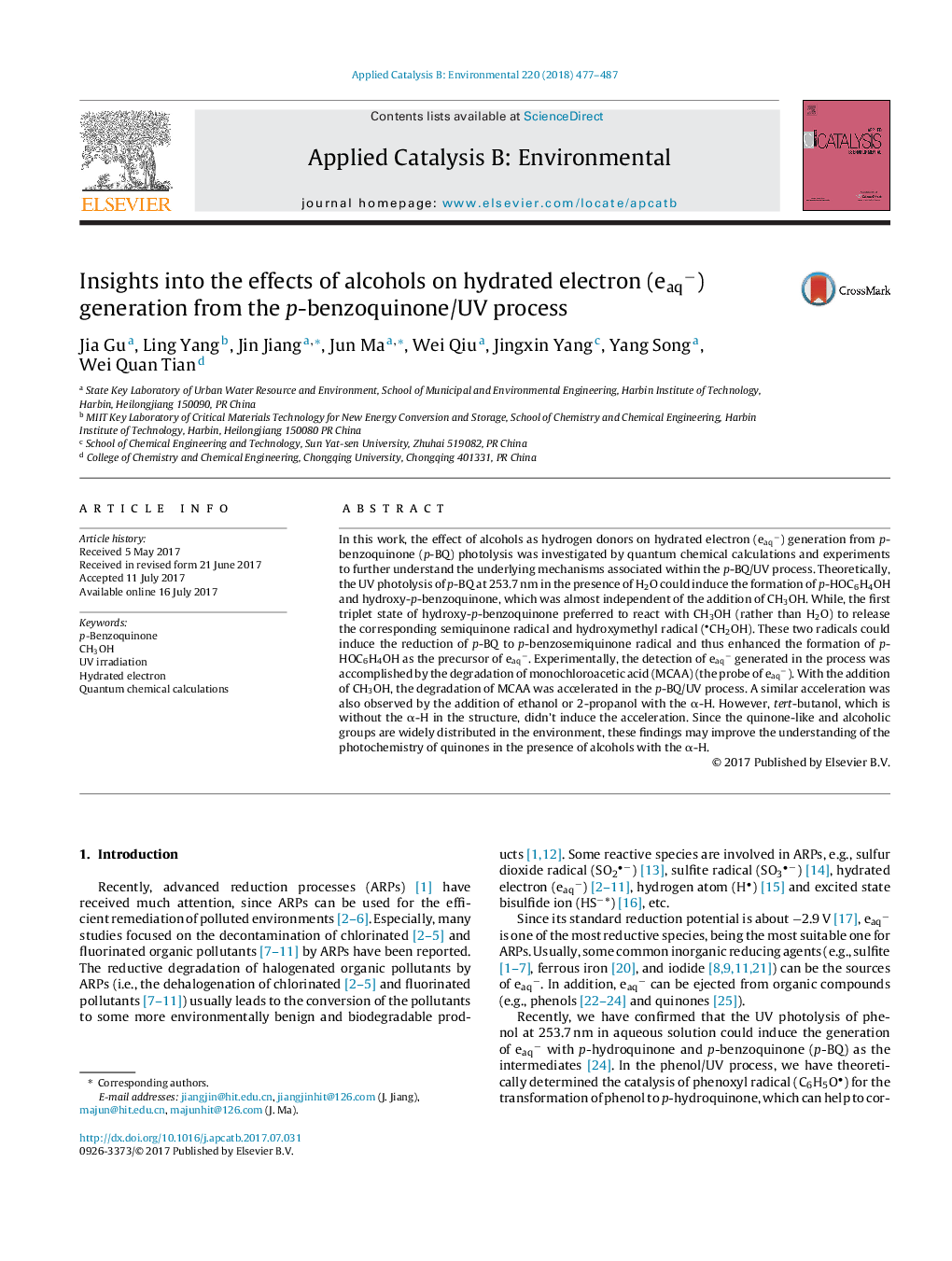| Article ID | Journal | Published Year | Pages | File Type |
|---|---|---|---|---|
| 6453641 | Applied Catalysis B: Environmental | 2018 | 11 Pages |
â¢The more efficient formation of p-hydroquinone from the UV photolysis of p-BQ in the presence of H2O was theoretically confirmed.â¢Theoretical results indicate that the first triplet state of hydroxy-p-benzoquinone preferred to react with CH3OH at 4-position.â¢In the CH3OH/p-BQ/UV process, CH3OH and p-BQ had a synergistic effect on the generation of hydrated electron.â¢Hydrated electron was generated in the process with H2O and CH3OH as the original sources.
In this work, the effect of alcohols as hydrogen donors on hydrated electron (eaqâ) generation from p-benzoquinone (p-BQ) photolysis was investigated by quantum chemical calculations and experiments to further understand the underlying mechanisms associated within the p-BQ/UV process. Theoretically, the UV photolysis of p-BQ at 253.7 nm in the presence of H2O could induce the formation of p-HOC6H4OH and hydroxy-p-benzoquinone, which was almost independent of the addition of CH3OH. While, the first triplet state of hydroxy-p-benzoquinone preferred to react with CH3OH (rather than H2O) to release the corresponding semiquinone radical and hydroxymethyl radical (CH2OH). These two radicals could induce the reduction of p-BQ to p-benzosemiquinone radical and thus enhanced the formation of p-HOC6H4OH as the precursor of eaqâ. Experimentally, the detection of eaqâ generated in the process was accomplished by the degradation of monochloroacetic acid (MCAA) (the probe of eaqâ). With the addition of CH3OH, the degradation of MCAA was accelerated in the p-BQ/UV process. A similar acceleration was also observed by the addition of ethanol or 2-propanol with the α-H. However, tert-butanol, which is without the α-H in the structure, didn't induce the acceleration. Since the quinone-like and alcoholic groups are widely distributed in the environment, these findings may improve the understanding of the photochemistry of quinones in the presence of alcohols with the α-H.
Graphical abstractDownload high-res image (99KB)Download full-size image
